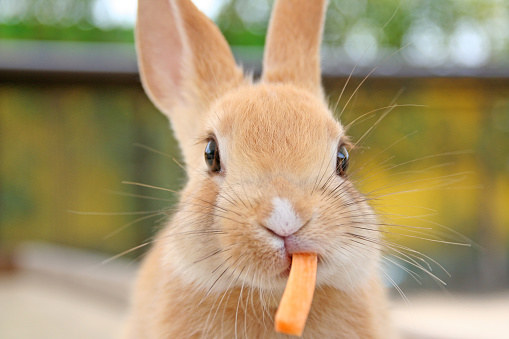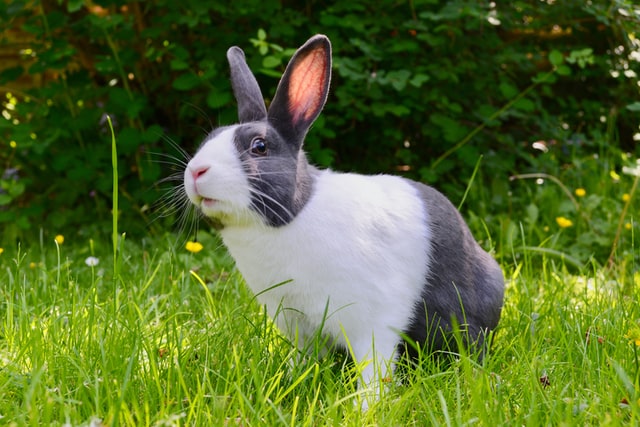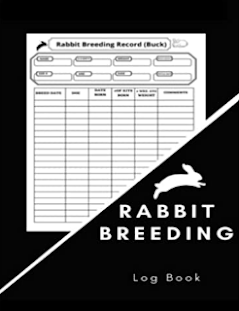A Complete Guide to Breeding Rabbits for Beginners
If you purchase something by joining this page, we may purchase a commission. The content of our publications is not affected by commissions. See the full story.
You've no doubt heard the expression, "They breed like rabbits!" The expression reflects the productive ability of rabbits to repeat most of the time, without any problem.
If you are looking to start raising small rabbits, then rabbit farming will be at the forefront of your business. Thus, knowing how to excrete healthy droppings from a solid female is vital to your activity.
Choosing a Breed Depending on Your Purpose
The varieties you decide to keep and breed will depend on what you may want to involve the rabbits in. Here is a summary of the best types for each of the accompanying purposes:
- Meat: California, New Zealand, silver foxes
- Fiber: Angora
- Pets: Flemish Giants, Rixes, Polish, Dutch
Each of these varieties replicates well, but meat breeds are the bulky litter breeds that most rabbits want. They produce the most units and the most meat per adult rabbit.
When to Breed Rabbits
Rabbits should not be bred until they are at least half a year old due to complications that may arise.
Unlike many different vertebrates, rabbits can be bred all year round. Their regenerative cycle is very special! You only ovulate if you are fertile... In fact, it is the manifestation of fertilization that initiates ovulation.
Therefore, there are times when it is more responsive to reproduction.
Selecting Your Breeding Pairs
It is necessary to choose matches of similar size. Breeding a huge handful of baby doe can result in an unpleasant pregnancy. Units may be too bulky for the doe to move.
A decent guideline is the mating of rabbits of a similar variety to each other in contrast to the hybrid breeding of huge and few varieties.
Moreover, never generate canisters of similar fuels to each other. Anyway, the doe can be reproduced back to the doe that created it, and the equivalent goes in dollars and makes it. This breeding is brought in line.
Most in-line breeding is carried out to enhance the beneficial qualities of the rabbits that you have decided to breed. Constantly remember, however, that inbreeding can also amplify unfortunate traits, so choose with caution.
How to Prepare The Buck’s Hutch for Breeding
By the time it is time to raise rabbits, it is best to do it on solid ground. Wire-bottomed restraints can get fingernails or even feet, and cause real injury if rabbits are wild.
If you have a wire-lined border, place a non-permanent wood floor at the bottom of the antelope's breeding enclosure and remove it later. Likewise, get rid of any feeders or waterers that rabbits might get stuck in, and give them more space.
Finally, take the doe frequently into the impala pen on very territorial grounds and you may continue to aggressively towards your buck.
The Rabbit Breeding Process
Since it has become very clear how to select and prepare your rabbits for breeding, now is the time to begin the sexual contact interaction!
1. Sexing Rabbits
Having sex with rabbits is certainly not easy, but it does tend to be learned with some training. She is trying to separate the males from the females and to exacerbate the situation, it is even more eager to catch your rabbits during sex with them. This makes the cycle considerably bleaker.
Young rabbits are more challenging to have sex with than mature rabbits. While you can try to have sex with them very early in life, it is ideal to stick with them until they are fully mature. Basically so you know what you're doing.
Here’s how to do it:
- Gently grab your rabbit by the clutter of its neck and lift it, supporting its weight with your other hand or arm.
- Position the rabbit's head with its back supported (support your rabbit in your arms).
- Your rabbit will relax whenever he is safely carried.
- Using your central finger and pointer, he applies pressure to the hole to push the individuals to appear somewhat.
- Note the bulge: It has a tied, pink-studded cut, while the dollars have a cylinder.
2. Mating Your Rabbits
When you put the hare into the antelope pen, the breeding system will start. Rabbits may chase each other, sniff each other, and the rabbit may step on its feet. There will be grunting, screeching, and other adorable bunny sounds you never thought existed before.
The doe will ride the doe and play with it on the back of the neck for health, and to keep the doe steady. Relax, it doesn't hurt her.
Assuming the doe is open, It will lie on its stomach with its back exposed. Then again, you might sit up and get pregnant.
If the hare is receptive, she will lie on her stomach and expose her back to the back. On the other hand, she may sit and hide her buttocks from the male if she does not want to be born.
If the doe behaves aggressively towards the doe or vice versa, remove the doe as soon as possible. Never force rabbits to stay in a cage together or leave them unattended. If you do, you may have died on your hands.
You can tell if your stunt has generated your suspense if he falls for her... yeah, she's actually pretty sexy. He often screams or grunts and rolls over to her side. It's fine, so don't worry!
For good measure, we often let our bull spawn at least three times in a breeding session. However, it is usually very defecated after the second time. Good money will get the job done quickly.
Once the breeding has been successful, remove the rabbit from the cage and return it to her own. Next, replace the feed and water bowls for the buck. He will be thirsty!
Make a note in your diary at home about his date of birth, and use our pregnancy calculator to see when you can expect combos.
3. Is The Doe Pregnant?
There are signs to watch for that a rabbit is pregnant, but without ultrasound, none of them are reliable.
Here are some indications that a rabbit may be pregnant:
You can feel the babies when you gently feel their tummy
She gained weight (weighed before she gave birth and two weeks later)
Nesting begins about a week before being stoked
If you want to be sure and safe, take your rabbit to the vet for a solid answer.
4. Doe’s Nesting Material Box
Is it adorable when they start nesting, they jump, and they completely build their nest? However, if they do not have the proper 'equipment', they may not be able to take care of their groups appropriately. It's up to you to make sure they have a warm, draft-free box available at least a week before you stoke them.
The nesting box should not smell like other animals or rabbits. If you have used a nesting box for any other purpose, be sure to clean it long before you introduce it to your child. Make sure the doe has plenty of time to get used to the nesting box in the cage.
*
Hay or this soft nesting material should be provided for the rabbit to create its own nest. She will do this on her own, so don't worry about creating the nest for her.
A few days before her birth, the bunny will start collecting the best pieces of hay for her nest. After that, she will go to work building a safe haven for her children.
5. Gestation Period and Kindling
From the time the doe is bred for fuel, about 30 days will pass ... plus or minus a little. During the development time frame, the doe should not be handled frequently, and the knockdown box should be left clean.
The female hare will need somewhat more food than expected but do not overfeed. Overloading pregnant jars leads to premature births and, often, the introduction of an obese baby or infant. In this way, gradually increase her food intake, giving plenty of roughage and water.
About seven days before giving birth to offspring, she will begin to pull the fur off her body to add protection to her home. This is a great way to tell her that she is pregnant with the understanding that some starters come close to fourteen days before you feed her.
All things considered, rejoice in case your husband does not settle down. Some accomplishments go to work in practically no time before you wake up.
As a side note, fur pulling can also be a misleading problem. Some have false pregnancies and build wonderful homes without having offspring. These deceptive ways of behaving may be due to premature birth or the reversal of another carrier nearby.
How to Care for The Doe During and After Pregnancy
Taking Care of the Kits
Unfortunate Complications
1. Eating Babies
2. Babies Born Outside of Nesting Box
3. Too Many Babies
4. Miscarriage and Infections
The Joys Of Breeding Rabbits
Was this article helpful?
Management Logbook.
(LogbookTracker for Rabbitry Businesses & Hobbyists and Rabbit Information Book and Records Essential to a Profitable Rabbits
get it here
other Logbook
Rabbit Breeding Log Book

.png)











Post a Comment